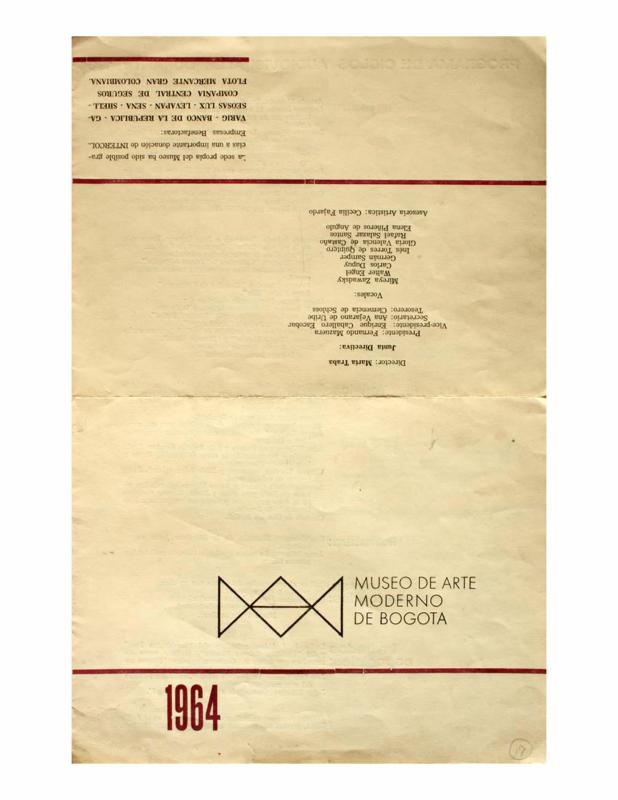Held in November 1963, the exhibition Tres Pintores Argentinos, featuring the work of artists Antonio Berni (1905–1981), Carlos Alonso (b. 1929), and Carlos Uria (1929–2008),was the first international exhibition at the Museo de Arte Moderno of Bogotá. This document is one of a series of catalogues on Latin American art published in conjunction with exhibitions held during the museum’s first period, which spanned from October 31, 1963 (when it opened its temporary premises at the intersection of Avenue 7 and Street 23) until mid-1965, when the museum collection and center of operations moved to the campus of the Universidad Nacional.
In the catalogue, art critic Marta Traba (1923–1983)—director of the museum at the time—asserts that it is necessary to violate and appropriate visual languages, to break with formality in order to generate “new painting” based on proposals that are not only innovative, but also committed to the reality in which they are produced.
In Traba’s view, the three Argentine artists selected for this show at MAM embody this “new painting.” The first and most widely recognized is Berni. After having been awarded first prize in printmaking at the Venice Biennale in 1962 for work revolving around the character Juanito Laguna, Berni traveled to Bogotá to show his series on the character Ramona Montiel. The second is Alonso, a much younger artist who exhibited a series of collages on paper. Finally, Uria’s contribution to this show consisted of a series of drawings, gouaches, and works in crayon that Traba describes as “expressionist.”
Related documents include “Segundo Informe anual de actividades, Museo de Arte Moderno de Bogotá (1964)” [see doc. no. 1093542].

